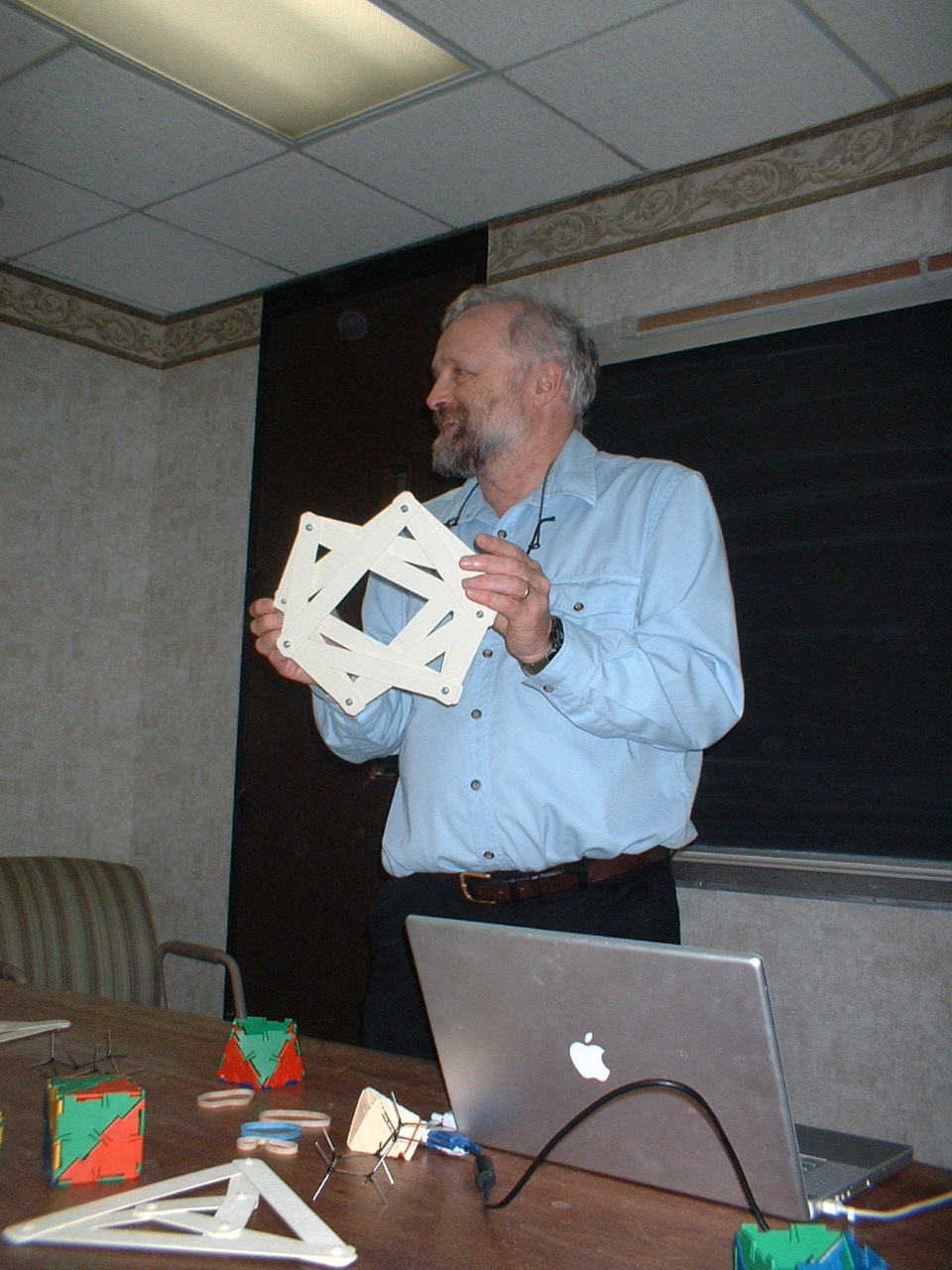Discrete CATS Seminar
U N I V E R S I T Y
O F
K E N T U C K Y
DISCRETE
CATS
SEMINAR
WHERE CATS =
COMBINATORICS,
ALGEBRA,
TOPOLOGY
&
STATISTICS!
845 PATTERSON OFFICE TOWER
FALL 2009

|
"Rigidity, flexibility, and symmetry of structures"
Walter Whiteley
York University
Monday, September 21, 2009
4:00 pm, 845 Patterson Office Tower
Abstract:
Over the last 30 years, a substantial body of results on first-order
(infinitesimal) and finite rigidity has been developed. The results
have both a geometric side (which frameworks G(p) are rigid) and a
combinatorial side (which graphs G make rigid frameworks at almost all
configurations p). In this work, the underlying projective geometry
of the configuration is central to whether a framework G(p) looses the
generic rigidity of the graph G. Because of this projective
invariance, all the basic theory has applied to all the metrics coming
from the shared projective geometry: Euclidean, Spherical, Hyperbolic,
de Sitter, ... . We will present a quick overview of these results,
with physical models, figures, and some applications (such as
biomolecules).
With this background, we will also describe some recent results
characterizing when symmetry changes the rigidity of a structure.
Because the geometric rigidity (and combinatorial rigidity) are
presented through matrices, the characters of the group
representations for the symmetry group become key to predicting when
symmetry has no impact, and when there is a loss of rigidity. With
some models and diagrams, we present an overview of recent results of
a number of researchers, including the results of the 2009 Thesis of
Bernd Schulze at York. Among other things, these symmetry results
predict many of the classical mechanisms.

